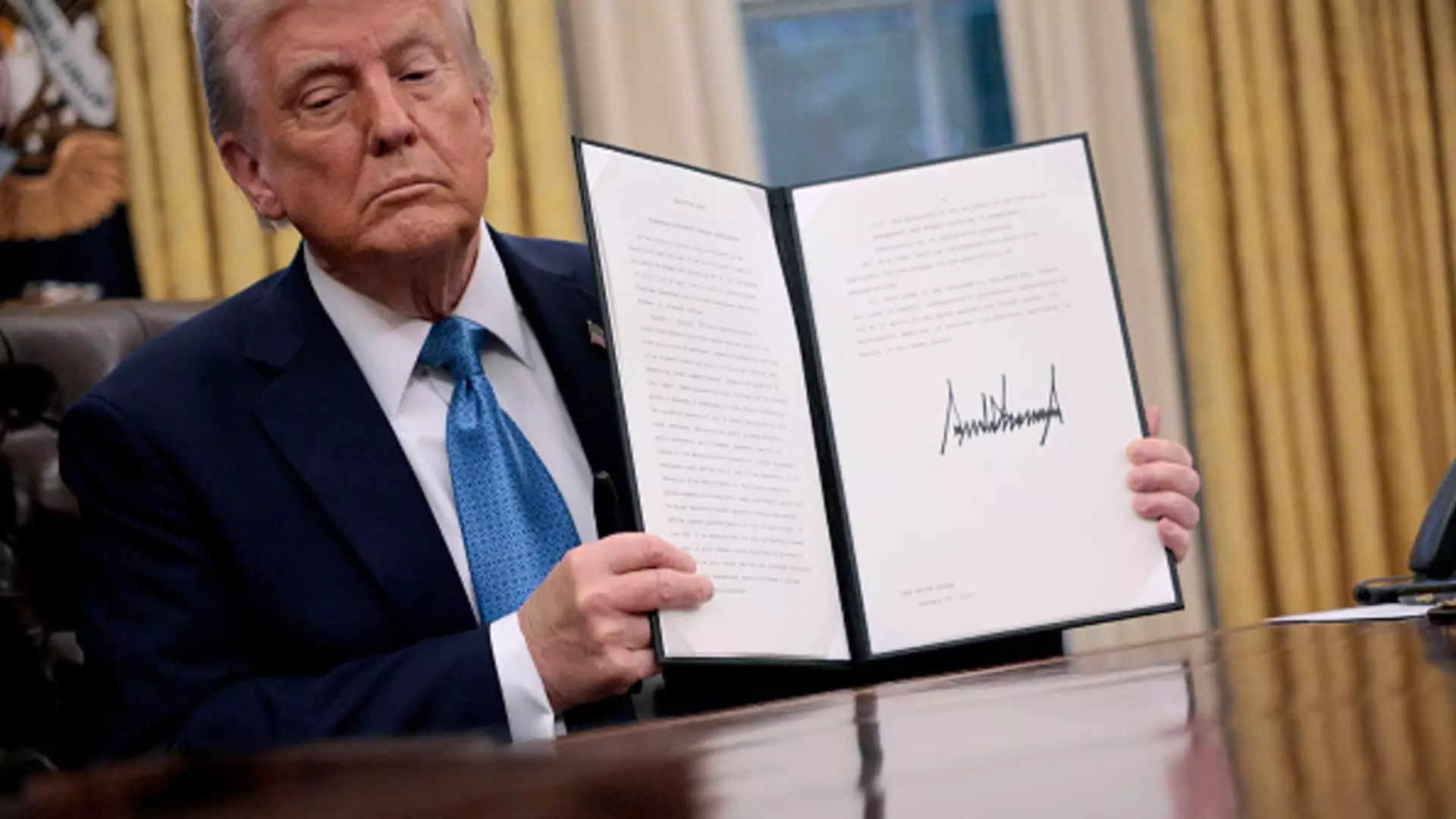The recent announcement by President Donald Trump regarding new tariffs has sent shockwaves through the U.S. stock market and raised alarms about the potential onset of a global trade war. With a sweeping approach targeting key economic partners such as Mexico, Canada, and China, the implications for various industries and the broader economy necessitate a closer examination. As tariffs make headlines, it’s essential to explore how these punitive measures could reshape supply chains, influence corporate earnings, and stir market volatility.
President Trump’s imposition of a 25% tariff on goods imported from Canada and Mexico, alongside a 10% tariff on Chinese goods, marks a significant escalation in trade tensions. Countries retaliating against the U.S. tariffs raises the stakes even higher. Canadian authorities have already indicated plans for retaliatory tariffs, while Mexico is weighing similar measures. Such escalation not only invites a tit-for-tat trade environment but also disrupts the established dynamics of international commerce, raising concerns about pricing, sourcing, and overall economic stability.
The automotive sector is poised to face the brunt of this tariff impact. Major automakers, including General Motors, Ford, and Stellantis, rely heavily on cross-border supply chains to maintain production efficiency. Increased tariffs could lead to an urgent reevaluation of manufacturing strategies, potentially forcing companies to shift production back to the U.S. Such strategic moves could contribute to higher operational costs and ultimately reflect in elevated vehicle prices for consumers.
Beyond the automotive industry, retail and consumer goods sectors are already showing signs of strain. For instance, companies like Constellation Brands, which imports significant volumes of alcohol from Mexico, find themselves at the mercy of volatile pricing and supply issues. The planned tariffs have triggered a notable sell-off in stocks associated with these businesses, reflecting investor anxiety about profitability and consumer spending.
The ripple effects of these tariffs transcend immediate concerns about specific industries. By increasing the cost of goods sold, tariffs can lead to higher consumer prices, undermining purchasing power. This scenario poses a dual threat: not only could it dampen consumer spending, but it could also sap business confidence resulting in reduced investments. The dire forecast from Goldman Sachs—projecting a potential 5% sell-off in U.S. stocks—highlights the fragile state of market sentiment amidst heightened trade tensions.
Industries heavily reliant on Chinese imports are particularly vulnerable. Retailers such as Nike and Lululemon, with extensive supply chains rooted in China, face the daunting prospect of rising import costs impacting their bottom lines. Moreover, companies like Five Below and Dollar General, which depend significantly on affordable imports, are likely to experience decreased margins as tariffs inflame their cost structures.
The transportation sector, particularly railroads, may face operational challenges stemming from the implementation of new tariffs. Companies like Union Pacific, Norfolk Southern, and Canadian Pacific Kansas City operate logistics that are sensitive to changes in trade regulations. A slowdown in freight movement due to tariff-induced price hikes could translate into reduced revenues and constrained profits, representing yet another layer of complexity in an already strained supply chain environment.
As the situation unfolds, one central question remains: how will these tariff policies shape the global trade landscape in the long run? The termination of the “de minimis” rule, which exempted low-value shipments from tariffs, could lead to a transformation in e-commerce, impacting retailers reliant on affordable pricing models, such as Temu and Alibaba’s AliExpress.
As President Trump’s tariffs resonate across industries and markets, stakeholders must brace for an uncertain future. The potential for escalated retaliation and prolonged tensions underscores the fragility of global trade systems. As we navigate this evolving landscape, the focus should be on fostering constructive dialogue to mitigate the move towards a full-scale trade war, ultimately paving the way for a more sustainable and cooperative economic environment.

